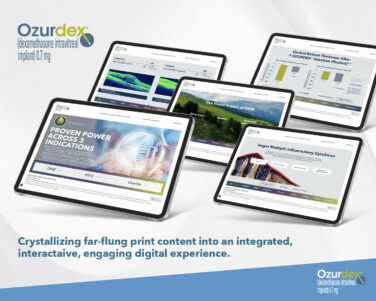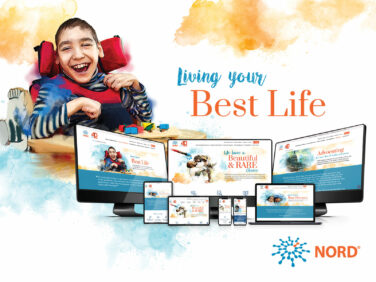PM360 asked our readers to tell us what 2024 trends they believe will stand the test of time and which will ultimately be duds.
What marketing trends are you paying the closest attention to in 2024? What do you believe has the potential to make the most impact in the year ahead and why?
I’m interested in how marketers will navigate today’s generative AI (GenAI) and newer AI models, particularly with regards to two key functions: generating clinical insights and controlling the brand narrative.
During the pandemic, Pfizer already had an AI/ ML-driven “digital rep advisor” to help field teams with decision support and next-best actions. New models will let users uncover insights faster, with breadth and depth, while projecting how customers and brand experiences are changing. For example, Veeva’s CRM Suite Bot combines a GenAI digital assistant with CRM functionality. The trend is toward more dynamic, responsive brand experiences with heightened 1:1 feeling. Controlling the brand experience will get harder. Reps in the past were the go-to authority on new data and its clinical meaning. Soon, patients and HCPs will be speaking aloud to multimodal GenAI models and AI-enhanced EHRs. Because the new models will still “hallucinate” and give out-of-date answers, brands will need to equip field teams with digital assistants whose data is always timely, compliant, and error-free. More than ever, reps must be in front of doctors with current data, framed against current key messages that anticipate and counteract lower-quality insights from tools HCPs use on their own.
 AJ Triano
AJ Triano
EVP, Practice Lead, Customer Experience Syneos Health
aj.triano@syneoshealth.com
As representatives battle for clinical differentiation within the HCP office, pulling through scripts based on access can get short shrift, resulting in unwritten or unfilled prescriptions.
As new terms go into effect within the Medicare Part D benefit design, even more unclaimed prescriptions may lie in wait. The opportunity to gain these prescriptions is there for the taking.
Until now, Part D drug demand was impeded by exorbitant out-of-pocket (OOP) costs (mostly from the unlimited 5% coinsurance in the catastrophic coverage phase) and general confusion over calculating a patient’s total cost across all phases of the benefit—daunting even for an actuary.
Next year, this burden will drop significantly as terms are simplified and total OOP costs are capped and lowered over time. In 2024, Medicare patients will pay no more than $3,300 for drugs; in 2025, no more than $2,000. Also, more patients can qualify for the Low-Income Subsidy, thus lowering their OOP costs. The Medicare Part D changes over the next two years can unlock access to latent demand that was previously out of reach. Manufacturers should seize the opportunity by educating prescribers and patients about the new affordability of Medicare Part D drugs.
 Laura Fields, PharmD Associate Principal, Consulting
Laura Fields, PharmD Associate Principal, Consulting
Payer Sciences
Laura.Fields@PayerSciences.com
As we forge into 2024, the B2B marketing trend I’m following closely is the integration of personalized in-person experiences and digital amplification.
This approach is critical because every client and prospect in the B2B realm is unique, demanding a tailored approach that delivers contextually relevant and timely insights. But, how can you best leverage personalization in service of growth?
The essence of this trend is not just personalization, but personalization at scale. It’s about creating connections that are both meaningful and memorable, whether through digital channels or face-to-face interactions. The content provided should not only resonate on a human level but also support client partners in their professional challenges, offering solutions and insights that improve their workday. A key aspect of this strategy is the development of a comprehensive measurement framework. This framework needs to evaluate the effectiveness of each interaction, whether digital or in-person and understand how these interactions collectively contribute to the overarching goal of providing exceptional value. In 2024, brands that successfully blend the personal touch of in-person experiences with the analytical depth of digital platforms will lead the B2B marketing space by creating experiences that foster deeper relationships and drive tangible business outcomes.
 Lindsay Merkle
Lindsay Merkle
VP, Client Development & Experience
GoodRx
lmerkle@goodrx.com
What trends do you think will generate a lot of buzz but will ultimately turn out to be much ado about nothing, at least in 2024? Why is the trend best avoided?
It’s almost impossible to read a press release, earnings statement, or attend a conference without hearing some mention of a company’s investment in Generative AI (GenAI).
The possible application of GenAI and large language models (LLMs) is significant and has the potential to stretch across the pharma value chain. However, while increased availability to data and computational power have undoubtedly allowed foundation-deep learning and LLMs to evolve, considerable risks associated with LLMs need to be effectively understood and navigated if companies are to make meaningful progress. These cover the reliability of information and biased outputs, potential monetary and associated operational costs to scale, and an inadequate, uncertain, and rapidly evolving regulatory environment.
To date, too many biopharma organizations are investing in widespread application of GenAI without clearly defined strategic objectives or scope of intent. This leads to lots of buzz but also lots of confusion and redundancy, meaning that success (in 2024 at least) appears unlikely.
Companies should consider defining use cases that can support stakeholders in addressing key business challenges. Asset decision making, patient identification, HCP engagement tactics, and insight generation across structured and unstructured datasets may be areas worth exploring first.
 Matthew Smith
Matthew Smith
Senior Principal, New Commercial Models & Digital Health IQVIA
matthew.smith2@iqvia.com
Retail media networks (RMNs) are generating buzz as the next big thing for pharma marketing in 2024.
If you aren’t aware, through RMNs marketers can advertise directly with retailers such as Amazon, Walmart, Target, or eBay, which have access to their own first-party data on their customers and provide an avenue to reach audiences at the point of sale. But based on conversations and what we’re seeing directly across the industry, I think this excitement might still be too premature. While RMNs present future potential, next year we’ll likely see more hype than physical impact for pharma brands—with much more on the horizon still to come.
RMNs still need to solve fundamental challenges before significantly enabling pharma campaigns, namely incorporating prescription data into their platforms. Without script insights or measurement, RMNs have limited utility for driving pharma outcomes.
They also must ensure compliance with health data privacy regulations as they expand targeting capabilities. While RMNs represent a growing digital marketing opportunity, 2024 will mostly see continued infrastructure building to sustain this approach.
 Catherine Pitman Senior U.S. Product Manager
Catherine Pitman Senior U.S. Product Manager
MiQ
catherinepitman@miqdigital.com
Sonic branding is a proven way to motivate your target, but not the careless way many DTC marketers are using it.
Music can work wonders. I was part of the agency that helped United Airlines adopt Rhapsody in Blue as their sonic signature. The score fit the brand perfectly. Gershwin’s glorious overture made you feel that travel is a sophisticated adventure.
Just the opposite is happening in the wave of DTC campaigns that employ musical branding. Most offensive are the Jardiance commercials. Each spot is a music and dance number where a large cast and a portly heroine sing about “the little pill with a big story to tell.” The big story is about managing your type 2 diabetes and heart disease. It’s a hokey, energetic mess of a spot whose choreography tries to distract you from the fair balance, a tactic sure to make a brand seem less trustworthy.
I’m all for having fun in advertising, but even more for style, taste, and relevance. Viewers are not the fools cynical marketers think they are. We need to communicate the benefits of our medications in ways that don’t embarrass the brand or the target. HCP engagement tactics, and insight generation across structured and unstructured datasets may be areas worth exploring first.
 Bruce Lee Founder, Chief Creative Officer IPNY
Bruce Lee Founder, Chief Creative Officer IPNY
bruce@IPNY.com
“RMNs still need to solve fundamental challenges before significantly enabling pharma campaigns, namely incorporating prescription data into their platforms.”






